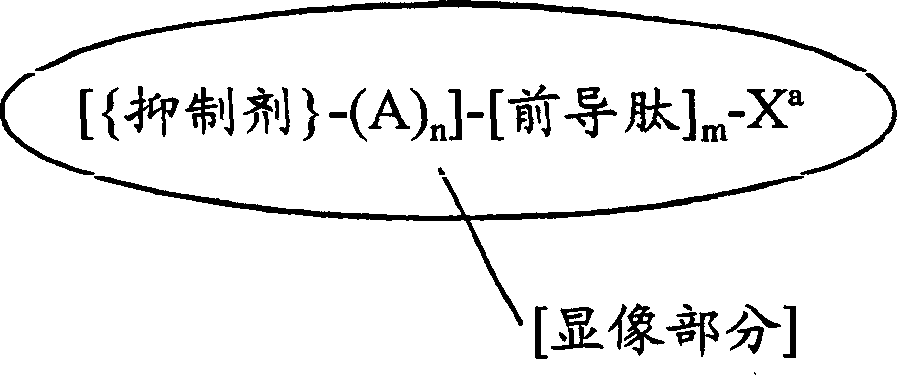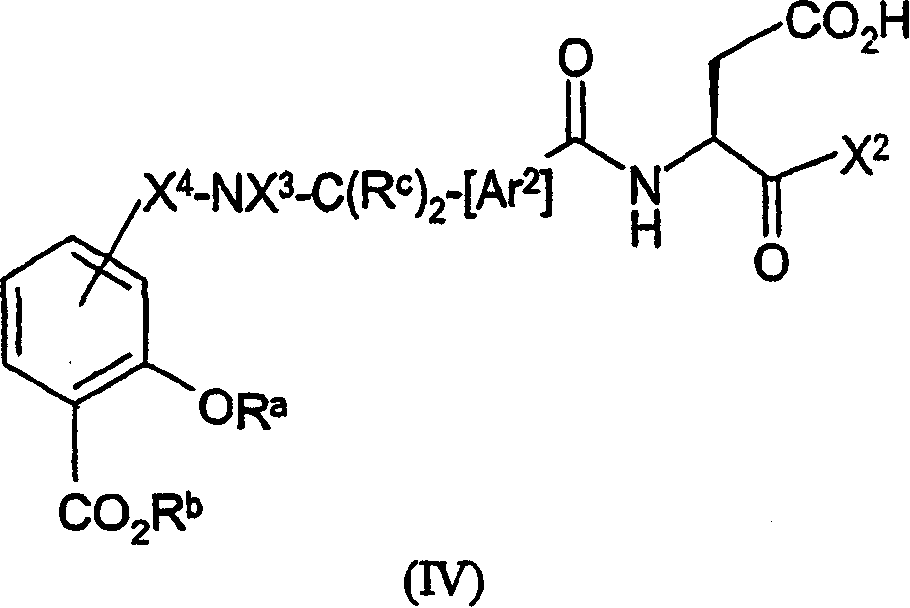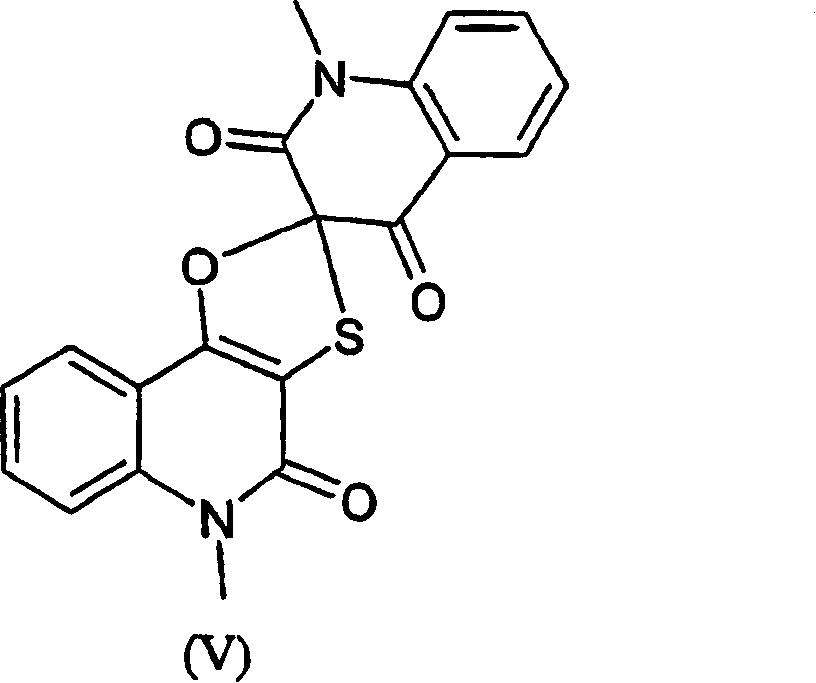Novel imaging agents comprising caspase-3 inhibitors
A cysteine aspartic acid, protease technology, applied in the directions of in vivo radioactive preparations, antiviral agents, preparations for in vivo experiments, etc.
- Summary
- Abstract
- Description
- Claims
- Application Information
AI Technical Summary
Problems solved by technology
Method used
Image
Examples
Embodiment 1
[0263] Embodiment 1: 1,1, the synthesis of 1-three (2-aminoethyl) methane
[0264] (Step a): Dimethyl 3-(methoxycarbonylmethylene)glutarate
[0265] Carbomethoxymethylenetriphenylphosphorane (167g, 0.5mol) in toluene (600ml) was treated with dimethyl 3-oxoglutarate (87g, 0.5mol) and the reaction was heated to 100°C in an oil bath. °C, heated at 120 °C for 36 hours under a nitrogen atmosphere. The reaction was then concentrated in vacuo and the oily residue was triturated with 40 / 60 petroleum ether / diethyl ether (1:1, 600ml). Triphenylphosphine oxide precipitates out and the supernatant is decanted / filtered off. The vacuum evaporated residue was subjected to Kugelrohr distillation under high vacuum Bpt (oven temperature 180-200°C, 0.2 torr) to give dimethyl 3-(methoxycarbonylmethylene)glutarate (89.08 g, 53% ).
[0266] NMR 1 H(CDCl 3 ): δ3.31 (2H, s, CH 2 ), 3.7 (9H, s, 3xOCH 3 ), 3.87 (2H, s, CH 2 ), 5.79 (1H, s, =CH,) ppm.
[0267] NMR 13 C(CDCl 3 ), δ36.56, CH ...
Embodiment 2
[0292] Embodiment 2: Another preparation method of 1,1,1-three (2-aminoethyl) methane
[0293] (Step a): Amidation of trimethyl ester with p-methoxy-benzylamine
[0294] Tris(methoxycarbonylmethyl)methane [2 g, 8.4 mmol; prepared according to Step 1(b) above] was dissolved in p-methoxy-benzylamine (25 g, 178.6 mmol). Install a distillation apparatus and heat to 120° C. for 24 hours under nitrogen flow. The progress of the reaction was monitored by the amount of methanol collected. The reaction mixture was cooled to room temperature, 30 mL of ethyl acetate was added, and the precipitated triamide product was stirred for 30 minutes. The triamide was isolated by filtration and the filter cake was washed several times with sufficient ethyl acetate to remove excess p-methoxy-benzylamine. After drying, a white powder (4.6 g, 100%) was obtained. The essentially insoluble product was used directly in the next step without further purification or characterization.
[0295] (Step b...
Embodiment 3
[0301] Embodiment 3: Preparation of 3-chloro-3-methyl-2-nitrosobutane
[0302] A mixture of 2-methylbut-2-ene (147ml, 1.4mol) and isoamyl nitrite (156ml, 1.16mol) was cooled to -30°C with a cardice / methanol bath, stirred vigorously with an overhead air stirrer, Concentrated hydrochloric acid (140ml, 1.68mol) was added dropwise at a rate such that the temperature was kept below -20°C. This takes about 1 hour and care must be taken to prevent overheating due to the large heat release. Ethanol (100 ml) was added to reduce the viscosity of the slurry (formed at the end of the addition) and the reaction was stirred at -20°C to -10°C for 2 hours to complete the reaction. The precipitate was collected by vacuum filtration, washed with 4 x 30 ml of cold (-20°C) ethanol and 100 ml of ice-cold water, then dried in vacuo to give 3-chloro-3-methyl-2-nitrosobutane as a white solid. The ethanol filtrate and washings were combined, diluted with water (200ml) and cooled, and allowed to stan...
PUM
| Property | Measurement | Unit |
|---|---|---|
| molecular weight | aaaaa | aaaaa |
Abstract
Description
Claims
Application Information
 Login to View More
Login to View More - R&D
- Intellectual Property
- Life Sciences
- Materials
- Tech Scout
- Unparalleled Data Quality
- Higher Quality Content
- 60% Fewer Hallucinations
Browse by: Latest US Patents, China's latest patents, Technical Efficacy Thesaurus, Application Domain, Technology Topic, Popular Technical Reports.
© 2025 PatSnap. All rights reserved.Legal|Privacy policy|Modern Slavery Act Transparency Statement|Sitemap|About US| Contact US: help@patsnap.com



